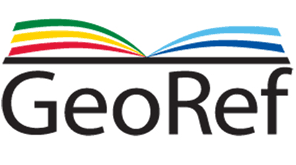Том 335 № 1 (2024)
DOI https://doi.org/10.18799/24131830/2024/1/4232
Системно-модельный анализ при оценке гидрогеологических условий месторождений полезных ископаемых Восточной Сибири
Актуальность исследования обусловлена тем, что в условиях сложной структурно-тектонической обстановки, недостаточности и неравномерности геолого-гидрогеологической изученности месторождений полезных ископаемых Восточной Сибири наиболее остро стоит вопрос оптимизации гидрогеологических работ и снижения финансовых затрат на их проведение. Цель: выделение ряда легко определяемых, косвенных показателей, предопределяющих выбор перспективных для бурения гидрогеологических скважин участков. Методы. Для повышения эффективности проектируемых работ использовался системно-модельный анализ, состоящий из двух этапов. Первый этап – обучение – базируется на использовании метода главных компонент и завершается составлением классификационной таблицы объектов-эталонов (хорошо изученных в геолого-гидрогеологическом отношении) в соответствии с выделенными наиболее значимыми, но легко доступными косвенными показателями. Второй этап – распознавание, или прогноз, – заключается в выявлении принадлежности объектов-аналогов (со слабо или совсем не изученными геолого-гидрогеологическими условиями) к тому или иному классу, определенному на первом этапе. При решении данной задачи используются программы, реализующие кластерный и множественный регрессионный анализы. В результате в соответствии с поставленной задачей классифицируются объекты-аналоги. Результаты. Разработанная методика получила разноцелевое применение, в том числе при структурно-гидрогеологическом районировании Илимо-Ленского плато, к которому приурочены основные железорудные месторождения Восточной Сибири, типизации россыпных месторождений Ленского золоторудного района по степени сложности инженерно-гидрогеологических условий, а также выделении участков повышенной водообильности на месторождениях нефтегазового комплекса Восточной Сибири. Полученные результаты позволяют рекомендовать метод для широкого внедрения в практику гидрогеологических исследований с целью оптимизации видов и объемов специальных работ на месторождениях полезных ископаемых для выявления наиболее водообильных зон при разработке систем водопонижения и водоснабжения, при разномасштабном структурно-гидрогеологическом районировании. Кроме того, метод системно-модельного анализа с учетом введения дополнительных способов обработки может найти и уже находит широкое применение при работе с базами данных и типизации объектов по эколого-гидрогеологическим показателям.
Ключевые слова:
системно-модельный анализ, оптимизация гидрогеологических исследований, Восточная Сибирь, комплексный показатель





